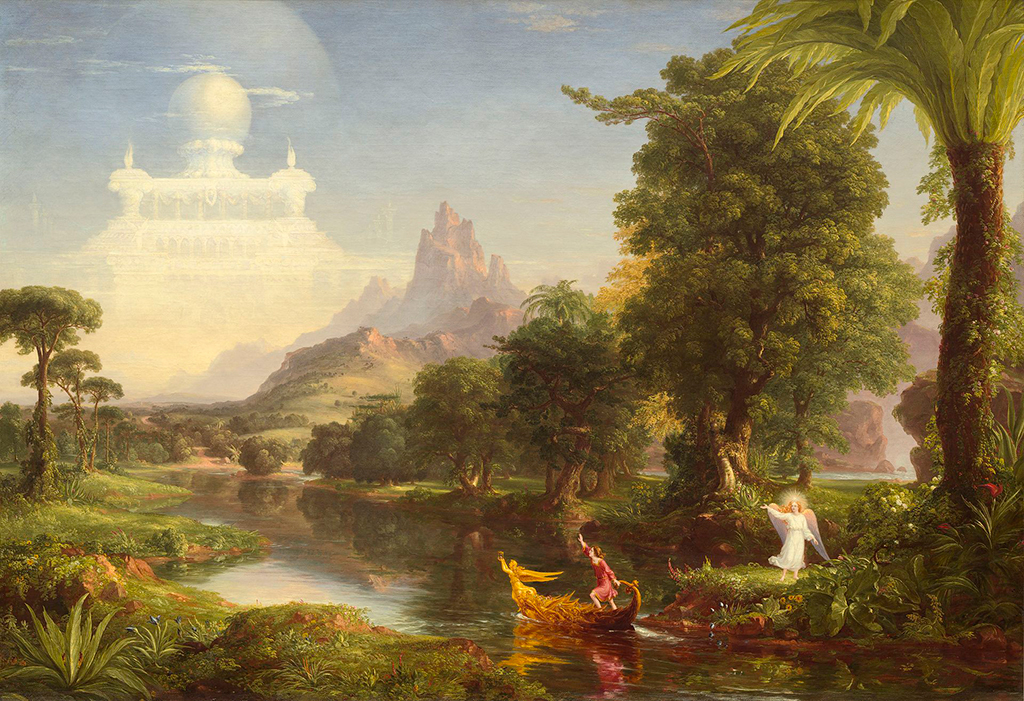The Voyage of Life by Thomas Cole is a series of paintings that represents an allegory of the 4 stages of human life: old age, manhood, youth and childhood. The series traces an archetypal Everyman's religious journey.
The paintings were executed in 1842 and depict a voyage travelling in a boat on the river through the mid-nineteenth century American wilderness. In all the paintings, the voyager is seen riding his boat while a guardian angel accompanying him. The landscape plays an important part in conveying the story.
In childhood, the child is gliding from a cave into the rich, green landscape. Youth is also showing the rich, green landscape, but the view and the voyager's experience have widened. The youth is firmly grabbing the tiller as the angel waves and watches from the shore, which allows him to take control. A ghostly castle is hovering in the distance, which is a white, shimmering beacon representing the dreams and ambitions of man. The painting is located in the National Gallery of Art.
To the youth in the painting, the calm rivers lead right to the castle. But looking at the far right side of the painting, the viewer can glimpse the river as it's becoming choppy, rough and full of rocks. Cole stated that the scenery of the painting, including its clear stream, transparent atmosphere, its unbounded distance, its towering mountains and its lofty trees, shows the romantic beauty of youthful thoughts. This is when the brain elevates Common and Mean into the Magnificent before life experience teaches the Real state of things.
In manhood, the man relies on religious faith and prayer to sustain him through a threatening landscape and rough waters. The man finally grows old and the guardian angel is seen guiding him to heaven. The river flowing through the canvas reflects the twists and turns of life, while the time of day and season mirror each stage of life. From the childhood innocence to the glow of youthful overconfidence, and through the middle age's trials and tribulations to the triumphant salvation of the hero, The Voyage of Life by Thomas Cole seems intrinsically associated with the Christian doctrine of resurrection and death.
The artist's intrepid voyager may also be interpreted as the personification of America at an adolescent development stage. Cole might have been giving a dire warning to people caught up in the frenzied quest for Manifest Destiny: The unconstrained westward industrialization and expansion would have tragic outcomes for nature and man.
Cole was self-taught as a painter; he relied on studying the works of other artists and reading books. Cole derived the theme from the allegorical traditions, such as Pilgrim's Progress, John Bunyan's popular narrative. He influenced his artistic peers, particularly Frederic Edwin Church and Asher B. Durand, who studied with the artist between 1844 and 1846.





